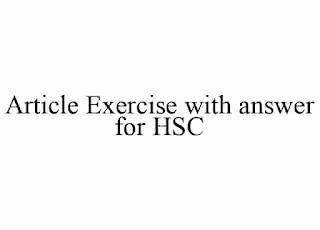Robert Frost fire and ice poem Analysis, Theme and Summary
Fire and ice poem analysis
“Fire and Ice” is a short poem written by Robert Frost, which was first published in 1920. The poem explores the destructive potential of human emotions, using the images of fire and ice to symbolize passion and hatred respectively.
The poem is composed of nine lines and follows the rhyming scheme of ABAABCBCB. Here's a breakdown of each line:
Some say the world will end in fire,Some say in ice.From what I’ve tasted of desireI hold with those who favor fire.But if it had to perish twice,I think I know enough of hateTo say that for destruction iceIs also greatAnd would suffice.
The poem begins with the speaker acknowledging the various beliefs about how the world will end. Some people believe it will end in fire, while others believe it will end in ice. The speaker then goes on to express their own preference for fire, based on their experience with desire.
However, the speaker acknowledges that if the world had to end twice, they believe that ice, which symbolizes hatred, would also be capable of causing destruction. The final line of the poem, "And would suffice," suggests that either fire or ice would be enough to bring about the end of the world.
Overall, “Fire and Ice” is a poem that explores the destructive power of human emotions. Frost suggests that both passion and hatred are capable of causing destruction and ultimately bringing about the end of the world. The poem serves as a warning against the dangers of unchecked emotions and the importance of finding balance in our lives.
Fire and ice poem analysis line by line
“Fire and Ice” is a short poem by Robert Frost, first published in 1920. The poem explores the idea that the world could end either by fire or by ice, and the implications of these two possibilities. Here is a line-by-line analysis of the poem:
Some say the world will end in fire,Some say in ice.
From the very beginning, Frost establishes the central theme of the poem: the idea that the world could end in one of two ways, either through fire or ice. By presenting these two possibilities, Frost sets up a dichotomy between heat and cold, and suggests that these opposing forces could have equally devastating consequences.
From what I've tasted of desireI hold with those who favor fire.
Frost introduces a personal perspective here, suggesting that his own experience with desire has led him to believe that fire would be the more likely cause of the world's end. This line could be interpreted in a number of ways; perhaps Frost is suggesting that desire, like fire, can be all-consuming and destructive. Or perhaps he is suggesting that fire represents the passion and intensity of life, whereas ice represents the opposite: coldness, detachment, and numbness.
But if it had to perish twice,I think I know enough of hateTo say that for destruction iceIs also greatAnd would suffice.
Here, Frost introduces a counterargument to his earlier statement, suggesting that if the world had to end twice, he would choose ice as the cause of destruction. He cites hate as the reason for this shift in opinion, suggesting that while fire may represent desire and passion, it is ice that represents the cold, emotionless hatred that could bring about the end of the world. The final line of the poem, "And would suffice," is a simple yet powerful statement that suggests either fire or ice would be enough to end the world, and that the choice between them is ultimately insignificant.
Overall, "Fire and Ice" is a meditation on the destructive potential of opposing forces, and the ways in which these forces can shape our lives and our world. By presenting fire and ice as two possible causes of the end of the world, Frost invites us to consider the implications of these two extremes, and to question our own beliefs about what makes life worth living.
Fire and ice poem summary
“Fire and Ice” is a short poem by Robert Frost, published in 1920. The poem is structured as a nine-line single-stanza, and it explores the nature of destructive forces in the world.
The poem begins with a hypothetical question, asking which of two opposing forces is more likely to cause the end of the world: fire or ice. Frost considers both elements as equally destructive, and argues that they could bring about the end of the world in different ways.
He describes fire as a symbol of desire and passion, which could consume everything in its path, leaving nothing behind. Ice, on the other hand, represents a kind of emotional coldness and indifference, which could also destroy the world by freezing everything solid and lifeless.
In the final lines, Frost concludes that either element could bring about the end of the world, and suggests that human emotions and desires may be just as destructive as natural forces like fire and ice.
In short, the poem is a meditation on the destructive power of human emotions and the inevitability of destruction in the world.
Fire and ice poem theme
The theme of “Fire and Ice” by Robert Frost is the destructive power of human emotions. The poem suggests that desire and hatred are two of the most destructive emotions that humans possess, and that both have the power to bring about the end of the world.
The first two lines of the poem pose the question of whether the world will end in fire or in ice, and the rest of the poem explores the consequences of each. Fire represents desire and passion, which can consume and destroy everything in their path. Ice represents hatred and indifference, which can freeze and suffocate all warmth and life.
The poem suggests that both fire and ice are equally dangerous and that they both have the power to bring about destruction. It also suggests that these destructive emotions are inherent in human nature and that we must learn to control them if we hope to avoid the end of the world. In this way, “Fire and Ice” can be seen as a warning against the destructive power of unchecked human emotions.



